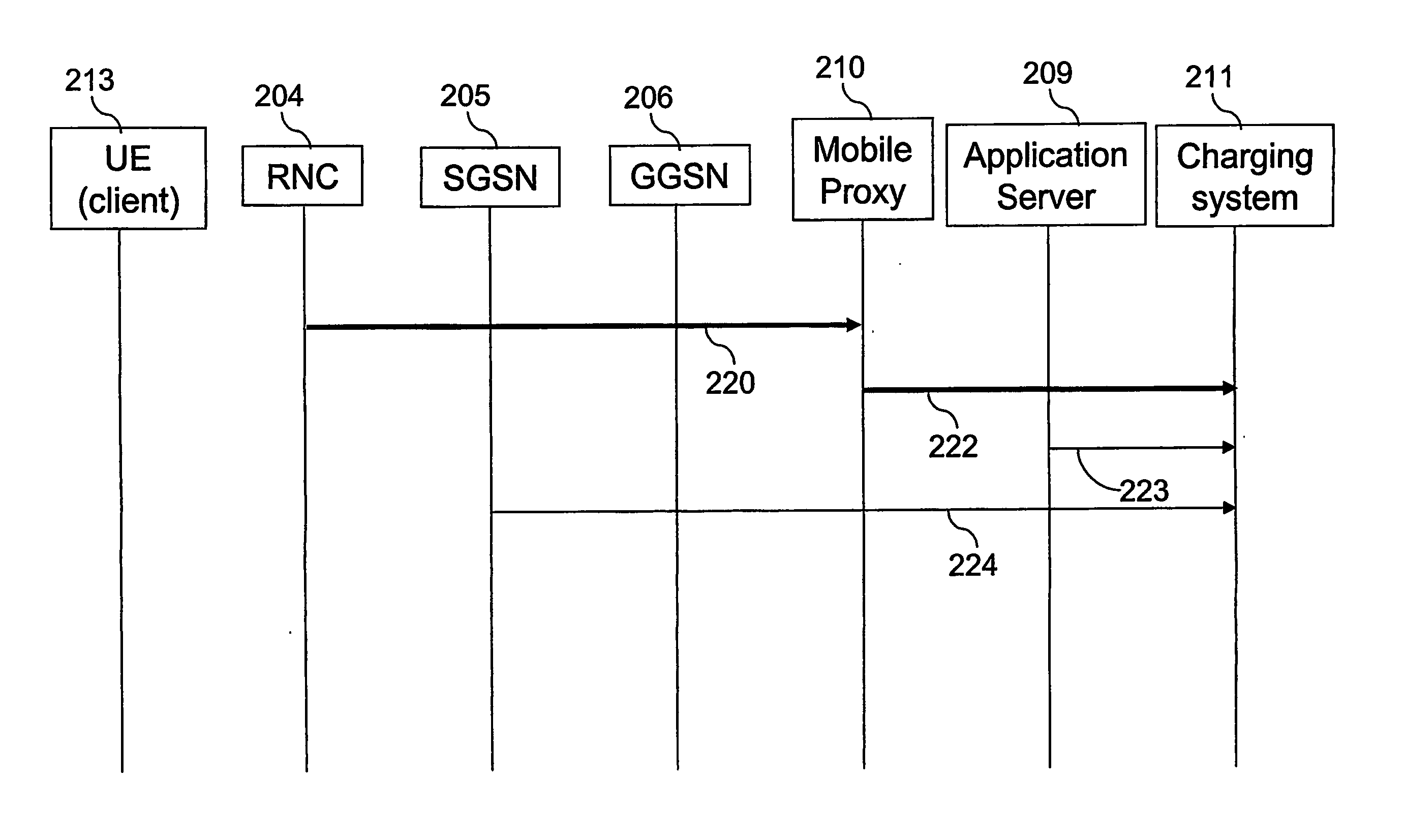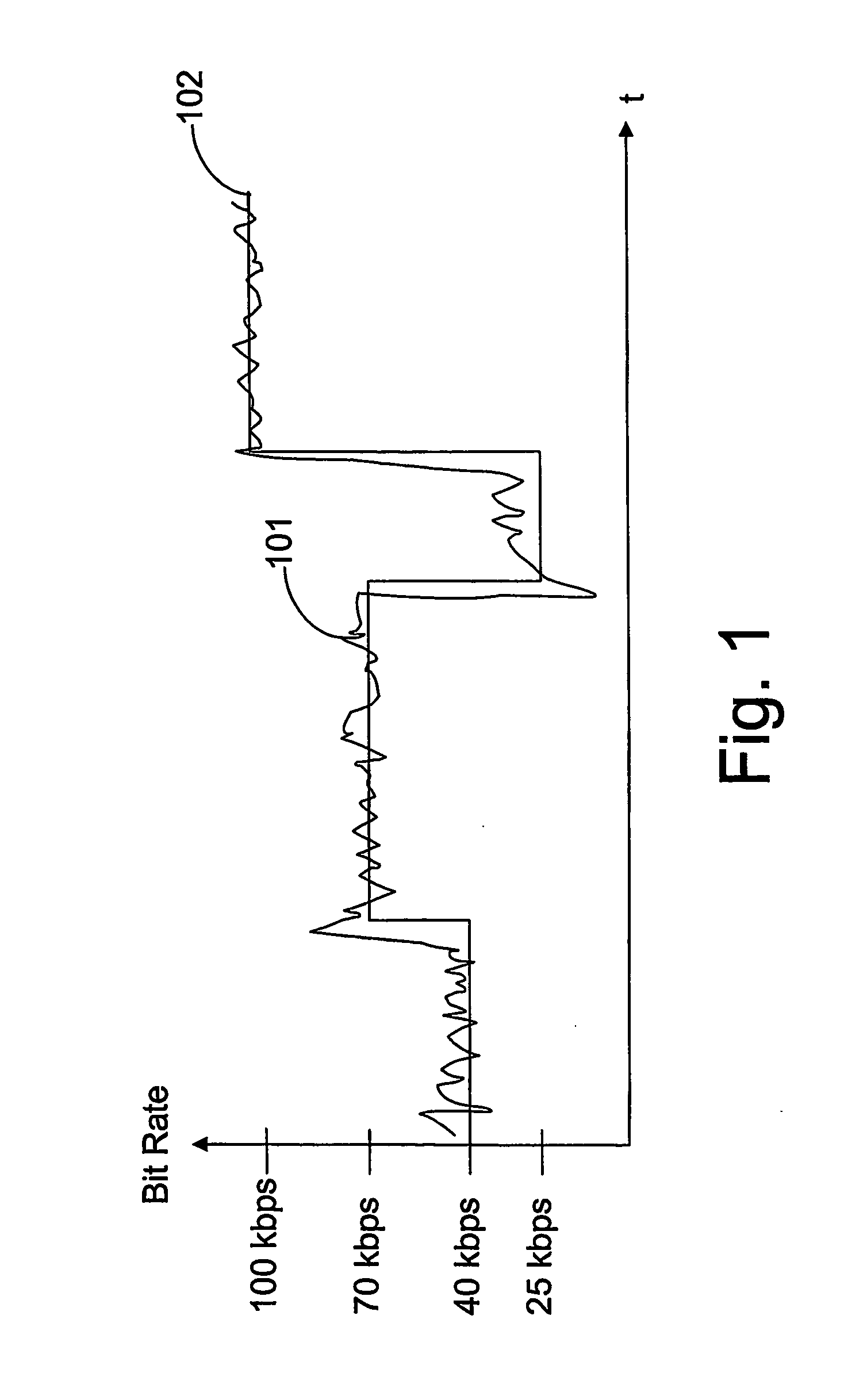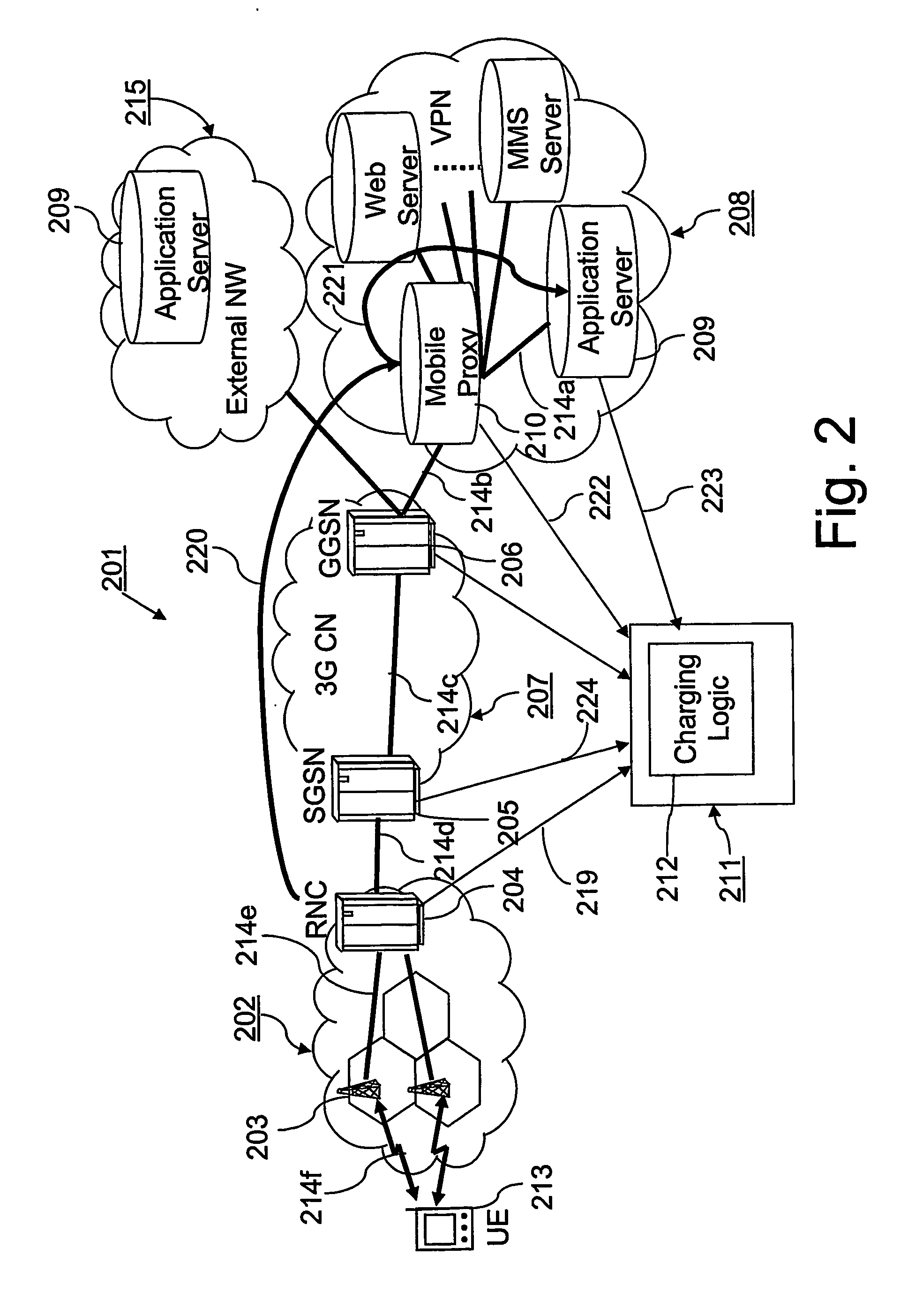Arrangement and method for determining charging in a telecommunications system
a technology of telecommunications system and charging method, applied in the field of communication system and method, can solve the problems of data over wireless link giving, charging problem, unreasonably high end user payment in relation to service quality, etc., and achieve the effect of avoiding quality of service, fair charging, and good customer relations
- Summary
- Abstract
- Description
- Claims
- Application Information
AI Technical Summary
Benefits of technology
Problems solved by technology
Method used
Image
Examples
Embodiment Construction
[0031] The present invention now will be described more fully hereinafter with reference to the accompanying drawings, in which preferred embodiments of the invention are shown. This invention may, however, be embodied in many different forms and should not be construed as limited to the embodiments set forth herein; rather, these embodiments are provided so that this disclosure will be thorough and complete, and will fully convey the scope of the invention to those skilled in the art. In the drawings, like numbers refer to like elements.
[0032] The present invention is applicable to person-to-content (P2C) and person-to-person (P2P) packet switched services in a mobile system. P2C services comprise packet switched communication between a user equipment of an end-user and an application server. P2P services comprise packet switched communication between two different user equipments of end-users. The present invention is also applicable to services involving more than two end-users ...
PUM
 Login to View More
Login to View More Abstract
Description
Claims
Application Information
 Login to View More
Login to View More - R&D
- Intellectual Property
- Life Sciences
- Materials
- Tech Scout
- Unparalleled Data Quality
- Higher Quality Content
- 60% Fewer Hallucinations
Browse by: Latest US Patents, China's latest patents, Technical Efficacy Thesaurus, Application Domain, Technology Topic, Popular Technical Reports.
© 2025 PatSnap. All rights reserved.Legal|Privacy policy|Modern Slavery Act Transparency Statement|Sitemap|About US| Contact US: help@patsnap.com



